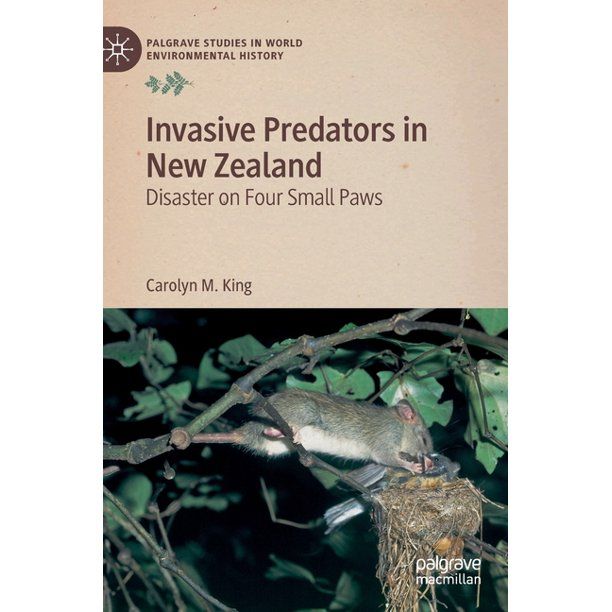
Disaster on Four Small Paws Book Review
Disaster on Four Small Paws – Invasive Predators in New Zealand
by Carolyn M. King, Environmental Research Institute, University of Waikato, Otago University Press, 2019
Review by Stanley Mulvany
This book is a comprehensive, historical review of the introduction of mammalian predators to New Zealand and the devastating effect on its endemic fauna. The narrative is focused on rodents, mustelids and possums. The New Zealand story is unique as no other country has such large concentrations of rats, mustelids, house mice and brushtail possums. In 2016, the government announced an aspirational goal of making New Zealand predator freed by 2050. To reach this goal, we need to understand the past—what we did and what we did not do—history is important—in that context, we can look to the future with some assurance.
Carolyn takes us on a great journey from the super-continent of Gondwana, 82 million years ago, when Zealandia started to break free and later rafted eastwards into the primordial seas carrying with it a polyglot collection of fauna and flora—including at least six different types of land dinosaurs. Over unfathomable periods of time, tectonic movements, climate change vulcanism and natural selection sculptured a different set of biota. The remarkable result was a land of largely flightless birds adapted to a unique environment devoid of mammalian predators. Then the rules changed, first with the arrival of the Polynesian voyagers around 1280 accompanied by kiore, the Polynesian rat and kuri, the Polynesian dog. The results were devastating to endemic species, defenceless against this alien onslaught. A third of the forest was burned and all the large birds taken. The arrival of Europeans in the late eighteenth century, along with their uninvited and invited guest in the form of rats, mice, and domestic animals was apocalyptic. Another third of the forest disappeared—an enormous amount of habitat for our fauna destroyed in a short period of time.
Part two of the book details the story of accidental invasions largely related to commercial shipping with their resident rodent populations.
Part three deals with the deliberate introductions of rabbits which reached plague proportions very quickly. The understanding at the time was that this was due to the absence of natural enemies, as in the British Isles, so the obvious answer was to import mustelids. The colonial government passed anti-rabbit legislation, and in 1881 appointed Benjamin Bayly to administer it and import mustelids. In 1858, brushtail possums were imported into Southland for the fur trade. The effect on forest trees was not noticed for a long time and in fact possums were protected. This eventually changed as the devastating effect on endemic fauna and flora became evident. Another nasty surprise was the European hedgehog.
Chapter 12 covers ‘Hard lessons in Pest Management (1976-2019)’ and takes us to the present and glimpses of the future. Our aspiration of eradicating pests from uninhabited offshore islands has been validated. We now view predator control as part of a national biodiversity strategy – PredatorFreeNZ 2050. At present this is not possible, but with new unknown technology, it may be. In the meantime, we must hold the line with conventional methods.
Carolyn’s book is the most comprehensive that I’ve read on the historical perspective of predators in New Zealand and a vision for the future of restoring biodiversity in Aotearoa.
